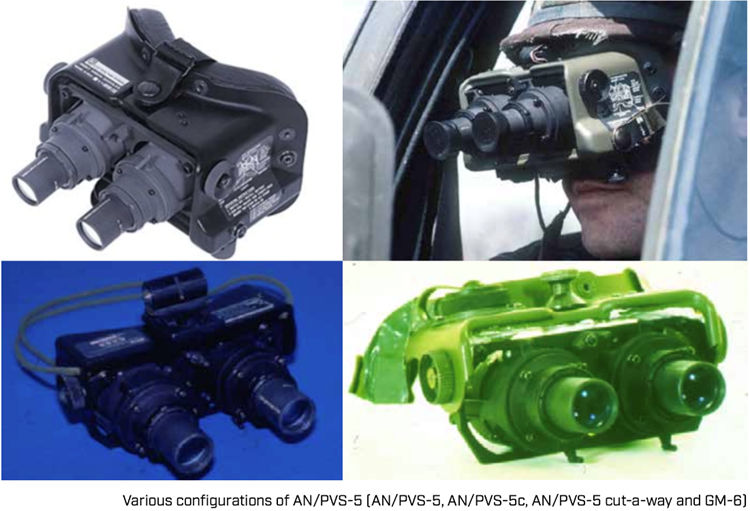Lesson 9 - Night Vision Goggles: A Leap from the Past to the Present
Oct 5th 2023
When we think of night vision goggles, our minds often conjure up images from movies or military operations. These high-tech devices have come a long way since their inception, evolving to become indispensable tools for various applications, including aviation. In this blog post, we'll take you on a journey through the history of night vision technology, highlighting the transition from the Gen II AN/PVS-5 to the cutting-edge Gen 3 AN/ANVS-6, explaining the advancements and benefits along the way.
The Humble Beginnings of Night Vision
In 1971, the United States Air Force (USAF) introduced the SU-50, marking the beginning of night vision technology's use. However, it was not until 1973 that the Army adopted the Gen II AN/PVS-5 as an "interim" solution for aviators. This early version of night vision goggles was a remarkable step forward but had its share of drawbacks.
Gen II AN/PVS-5: An "Interim" Solution
The Gen II AN/PVS-5, while revolutionary in its time, had its limitations. It weighed in at a hefty 2 pounds and featured a full-face mask. One of the notable issues was its low-light-level performance, making it less effective in challenging night-time conditions. Additionally, the goggles suffered from visual face-mask obstruction and required constant refocusing, which was incompatible with cockpit lighting systems.
Understanding the Spectral Range
These Gen II goggles operated within a spectral range from 350 to 900 nanometers, covering not only the entire visual spectrum (380–760 nanometers) but also some near-infrared (IR) wavelengths. This made them susceptible to interference from cockpit lighting systems, particularly those using red incandescent lamps with strong red and IR emissions.
The Automatic Gain Control Challenge
One of the significant challenges faced by pilots using Gen II AN/PVS-5 goggles was the automatic gain control (AGC). The AGC would shut down the goggles in the presence of excessive radiant energy within their range. Consequently, pilots had to rely solely on the goggles for all visual observations, including reading cockpit instruments. This led to discomfort, annoyance, and fatigue during night flights.

A Glimpse into the Future: Gen 3 AN/ANVS-6
Thankfully, technology has come a long way since the introduction of Gen II AN/PVS-5 goggles. The Gen 3 AN/ANVS-6 represents a significant leap forward in night vision technology. These advanced goggles offer improved low-light performance, reduced weight, and better compatibility with modern cockpit lighting systems.
Hands-Free Night Vision Redefined
With Gen 3 AN/ANVS-6 goggles, pilots can say goodbye to the discomfort and inconvenience of constantly moving their heads and refocusing lenses. These modern wonders provide a seamless and hands-free night vision experience, allowing aviators to focus on flying safely.
Conclusion
The journey from the Gen II AN/PVS-5 to the Gen 3 AN/ANVS-6 is a testament to the remarkable advancements in night vision technology. Today, night vision goggles have become an indispensable tool, not just for the military but also for various civilian applications like wildlife observation, security, and more. As technology continues to evolve, we can only imagine the exciting possibilities that lie ahead in the world of thermal and night vision optics.
